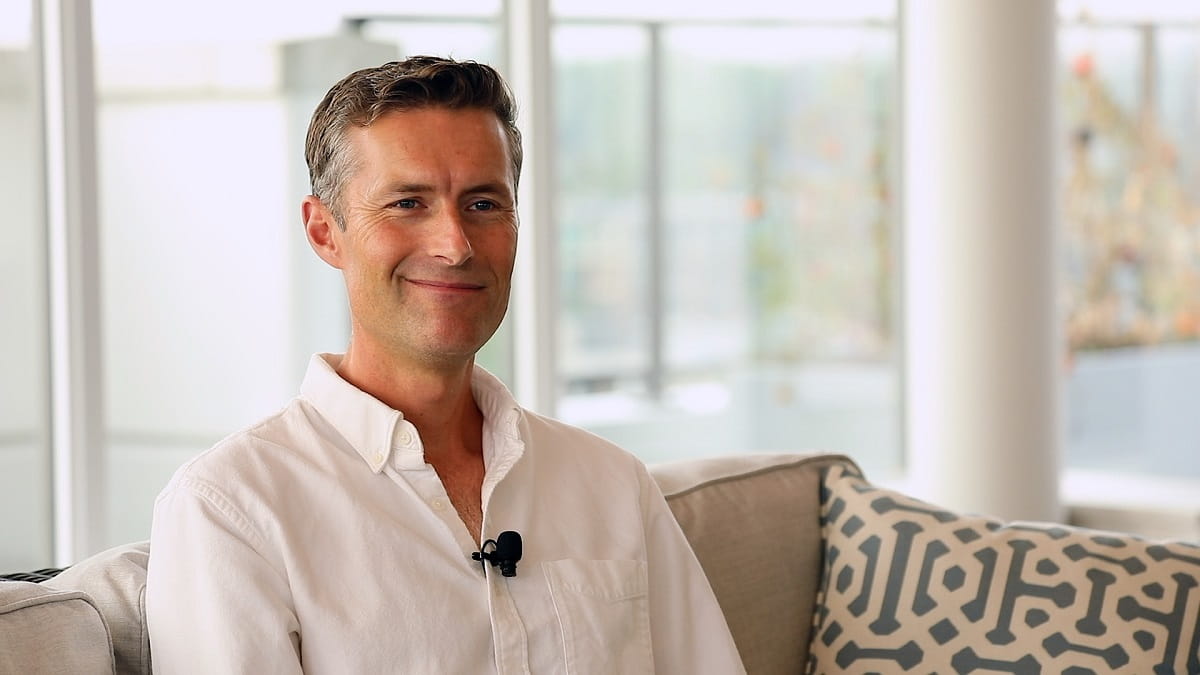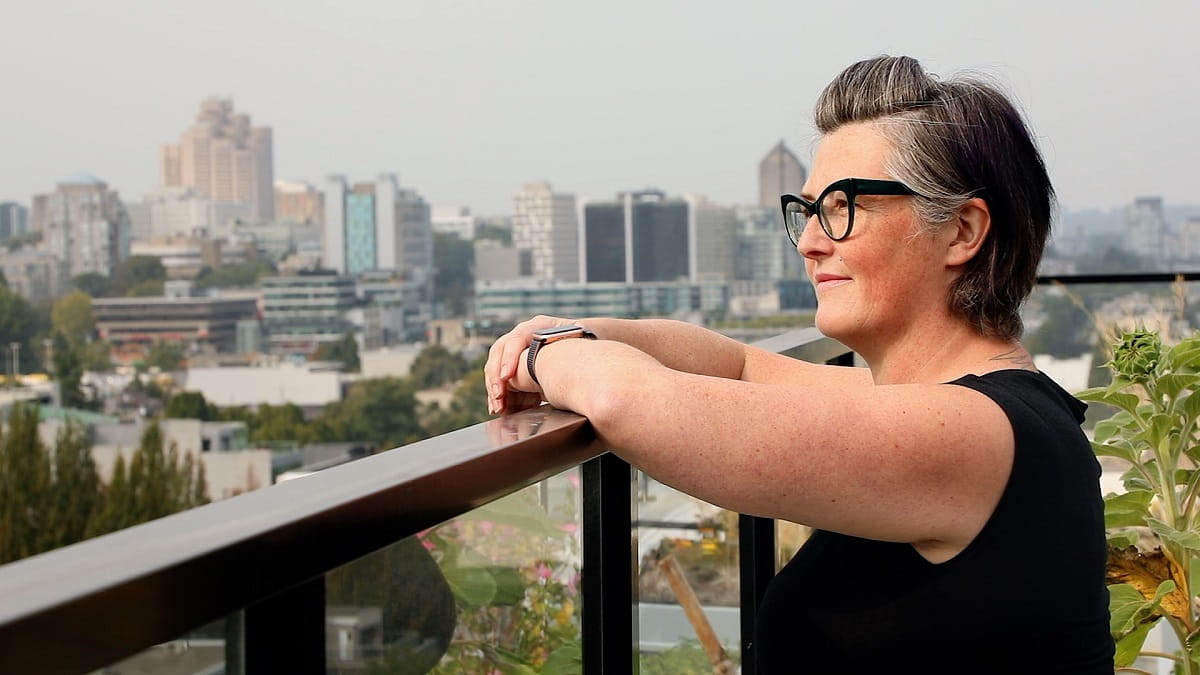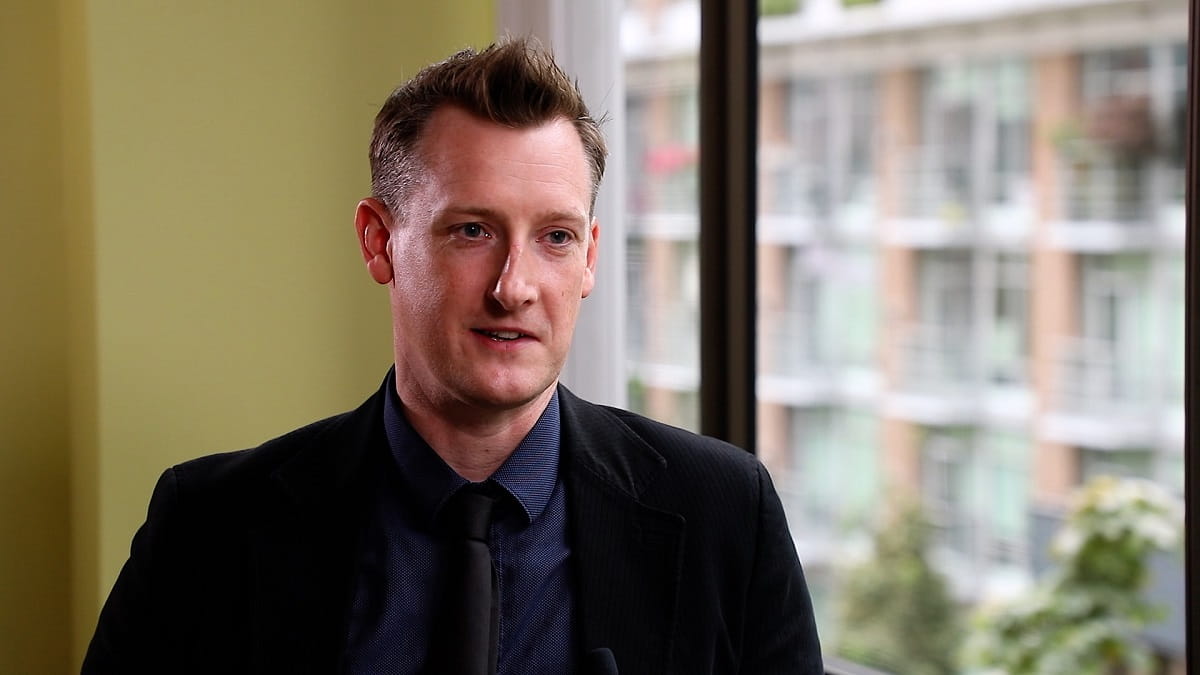Changing the game for Vancouver renters
October 27, 2023
AT A GLANCE
- High demand and limited supply have left Vancouverites with few options for affordable rental housing.
- Non-profit developer Catalyst Community Developments is tackling the issue by creating housing for the ‘missing middle.’
- Thanks to Catalyst’s Aspen project, long-time Vancouver resident Jennifer Cara was able to return to the city she loves and find an affordable 3-bedroom home for her family.
Vancouver’s affordable housing crisis is well documented. High demand for rental housing, limited supply and a steady influx of newcomers has resulted in rising rent costs and few affordable options. Many renters are choosing to either stay longer in their units or leave the city altogether in search of more affordable living.
It’s a challenge one non-profit developer is tackling head on.
THE MISSING MIDDLE
Luke Harrison, president, Catalyst Community Developments is seated in a rooftop lounge. Floor to ceiling windows cast views along Vancouver’s Main Street to the north, and the vibrant Mount Pleasant neighbourhood to the south.
You may be forgiven for assuming this is either a luxury hotel or a new condo building. It is neither.
Aspen is 145-unit mixed-use building providing Vancouver residents with affordable living in the heart of the city. Opened in 2021, there is a restaurant and health centre on the ground floor, access to parking, community gardens and a shared rooftop terrace. The units are pet-friendly and a portion are accessible. The building is within easy access to transit, parks, restaurants and other amenities. Downtown is a little more than a 30-minute walk away.
It is one of 9 affordable rental buildings across BC created by Catalyst, a non-profit developer targeting the ‘missing middle.’

“We define the missing middle as people with average household incomes in the communities that we build and operate in,” says Luke. “And so, we liken that to teachers, baristas, even people in the medical profession and others who are really locked out of being able to find adequate housing that can be afforded by those salaries.”
Unsurprisingly, Aspen is fully occupied and has a wait list of 120 people.
“Aspen came about at a time when the City of Vancouver was considering how to create more affordable housing and what assets and resources they had to do that,” says Luke.
The need for affordable rental housing, no surprise, is significant.
“The city identified parcels of land that were suitable for development and invited Catalyst and other community housing developers to create affordable rental buildings. The ultimate goal was to drive down rents and increase affordability.”
“The need for affordable rental housing, no surprise, is significant,” says Ryan, development manager, City of Vancouver. “Our planning department just completed a needs assessment and that found that there’s over 77,000 households that are in housing that’s unaffordable or inadequate.”
The primary challenge, says Ryan, is economics.
“Five, 10 years ago you could get a social housing project off the ground with a low-cost loan say from CMHC and a nominal lease from the City of Vancouver and you’re off to the races. Now due to rising construction costs, the rents that you need to charge to support the costs on a project like that are unaffordable to those on local incomes. Significant capital contributions are needed from senior government to get these kinds of projects off the ground.”
The combination of below-market financing as well as city land was really a winning combination to create affordable rents.
Enter, a new partnership model.
“The founding of Catalyst was based on partnerships and so partnerships are very important to how we create all our projects,” says Luke. “In this case it was really a partnership that was started between Catalyst, the City of Vancouver, Vancity and then ultimately, CMHC.
It just worked really, really well that that happened close to the start of the National Housing Strategy and the new Rental Construction Financing Initiative. The combination of below-market financing as well as city land was really a winning combination to create affordable rents.”
WORKING PERSON PENALTY
When long-time Vancouver resident Jennifer Cara had children, she found herself squarely in the missing middle.
“Vancouver has a working person penalty,” she says. “Everyone that lives downtown wants the services. They want the retail, the Starbucks…but no one that works in Starbucks can afford to live in downtown Vancouver. I had a relatively good job but I couldn’t afford to live downtown anymore. Plus, as I found out, no one wants to rent to someone with 2 babies.”
Once you get out of the rental market in Vancouver, how do you get back in?
Together with her partner, Jennifer and their 2 children moved to Victoria to be closer to her partner’s family.

“We needed help because 2 babies, that’s a lot of babies. And it was great, but I had spent all my adult life in Vancouver and was looking for ways to come back.
But once you get out of the rental market in Vancouver, how do you get back in?”
Then she discovered Catalyst.
Catalyst buildings use Housing Income Limits — the maximum gross household income for eligibility in many affordable housing programs. The limits vary by region and are set by BC Housing, based on figures established by CMHC.
Jennifer fit into the Housing Income Limits for Victoria and qualified for Catalyst’s Madrona building.
Until she progressed up the career ladder.
We want to create an ecosystem where people can come in and be renters for life and be in a better position, frankly, than they would be in something that they owned.
“Suddenly I was slightly over the limit for Victoria. My kids’ dad said Hey, there’s a place in Vancouver by Catalyst and it has the same kind of deal where’s there’s tiers. But, I fit into this one because it’s Vancouver and it’s more expensive.”

Jennifer’s new home at Aspen is close to the skytrain, her children’s school, Science World — their ‘happy place’ — and has lots of space for her family and dog.
“It enabled me to come back where all my friends are. I had all my business contacts here and this is kinda my hometown.”
Her new Vancouver rental experience is also far different to her previous one.
“I’ve met neighbours on my floor. Last time I lived in Vancouver, I was in the same building for 13 years and knew one person. It’s valuable for Vancouver to have buildings like this that have people with different income levels and life experiences. I think that makes more of a community.”
TRANSFORMING A CITY BLOCK, CREATING AN ECOSYSTEM
“Before this development this was a vacant site,” says Ryan. “Almost an entire city block with nothing happening. It wasn’t really contributing to the community at all. Now it’s punching more than its weight. It’s providing 145 homes for folks who have access to transit, parks, community-based services that otherwise couldn’t afford to live here.”
“There’s a social norm within Canada that you rent for a period of time in your life and then you move on to home ownership,” says Luke. “We want to create an ecosystem and environment where people can come in and be renters for life and be in a better position, frankly, than they would be in something that they owned.”
KEY FACTS
- Aspen is a 145-unit rental building that provides affordable housing for Vancouver residents.
- Aspen was supported by the Rental Construction Financing Initiative. This National Housing Strategy initiative provides low-cost loans to encourage the construction of sustainable rental apartment projects across Canada.
- Aspen received pre-construction financing through the Vancity Affordable Housing Accelerator Fund (formerly the Vancity Equity Loan Fund).
- The City of Vancouver contributed land for the project through the VancouverAffordable Housing Agency.
- Catalyst Community Developments is a BC-based not-for-profit real estate developer, dedicated to building affordable rental properties.
SEE ALSO

